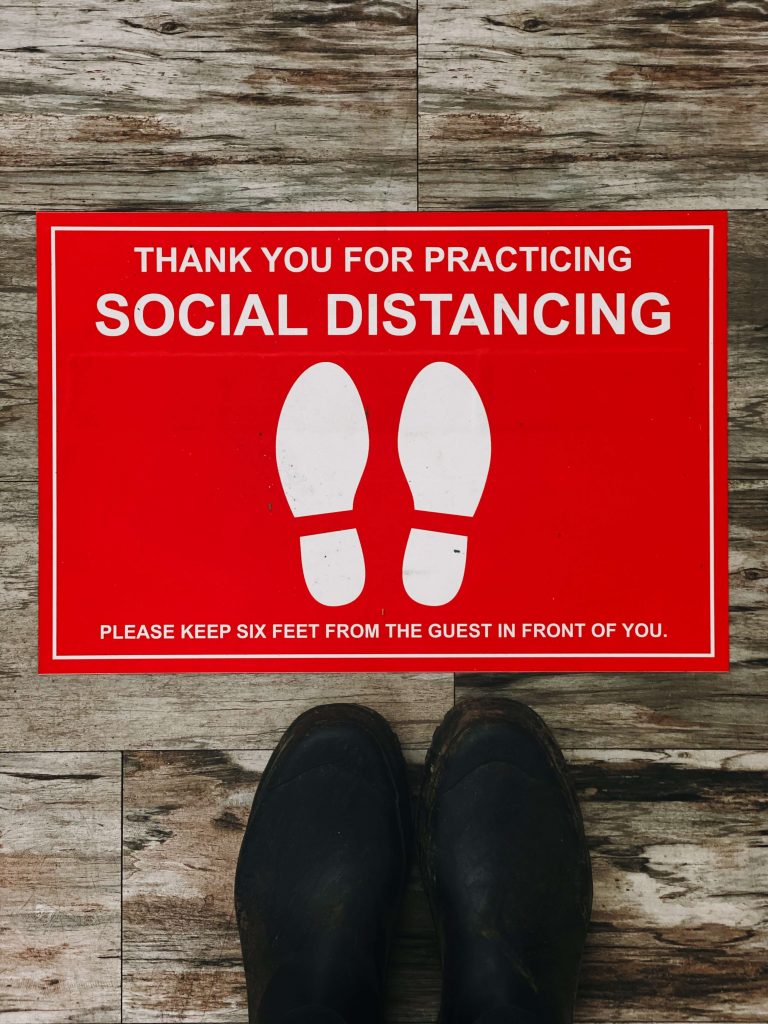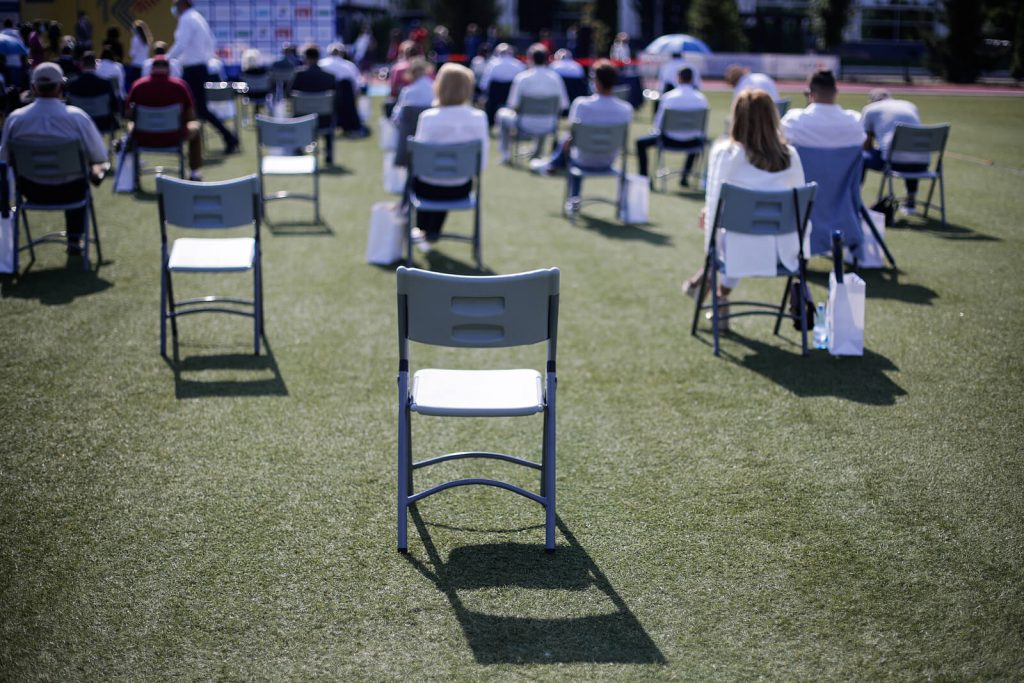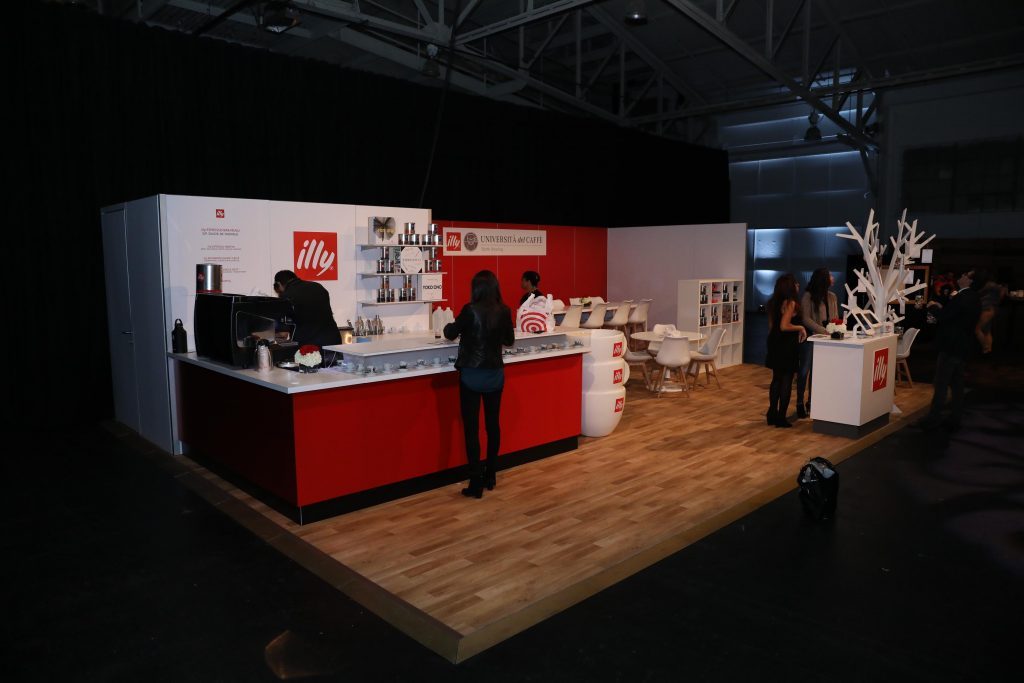As live events return in 2021, health and safety is a high-priority concern for all event organizers. One of the most pressing areas is social distancing compliance. People vary greatly in terms of their willingness to comply with social distancing and other health and safety recommendations. Even willing attendees sometimes struggle to follow physical distancing measures. As an event organizer, what can you do to ensure social distancing compliance—and make it easy—at your next event?
Why Do People Ignore Social Distancing Recommendations?
The standard social distancing recommendation is six feet—or two meters—between people. It may seem easy enough to do, but, in practice, it can be more difficult than you think. Here are some of the reasons people get it wrong:
1. Lack of Clear Instructions
One reason people don’t follow social distancing instructions is simple: They’re not sure how to. Official guidelines on social distancing and other protection measures can vary by state and even by county. For people who have traveled to attend an event, this may mean they just don’t know what they’re expected to do. When faced with this situation, they may try to do the right thing and get it wrong, or they may eventually give up due to their own uncertainty.
2. Social Norms
Another reason attendees may not keep a six-foot distance is that it goes against long-established habits. Social distancing compliance asks people to do something they’re not in the habit of doing. And human nature being what it is, sometimes they just forget!
Everyone has their own ideas about personal space and what they’re comfortable with. Even so, most of us tend to stand fairly close together in social situations. Depending on whether you’re talking to a close friend or a casual acquaintance, you probably stand somewhere between two to four feet away—certainly a good deal closer than the recommended six-foot radius of social distancing.
It’s a habit you’ve been following all your life, and that makes it a difficult one to break. Maintaining that six-foot distance isn’t just a matter of checking once and then assuming you’re good for the rest of the conversation. Because it’s such an ingrained habit, breaking it takes constant, conscious self-monitoring. And this is why it’s so hard to do, particularly at a busy event.
Imagine the scenario: You get involved with two or three people in a group discussion, and you start out talking at a six-foot distance. But as you become more engaged in the discussion, that physical distance starts to break down. You agree with someone’s statement and take a step towards them, completely unconsciously. As you keep talking, you all instinctively move into a smaller, tighter circle without thinking. By the time you say goodbye, you’re only four feet apart, without even realizing it.
Most people do understand what the social distancing suggestions are. But, in practice, it’s hard to self-monitor and keep following those rules, even when you want to.
3. Denial
There are people who ignore social distancing guidelines because they think they aren’t necessary. These people won’t necessarily comply at your event just because you make it easier for them to do so.
If there are people at your event who refuse to comply with social distancing and other protective measures, it puts you in the difficult position of having to address transmission risk, while also wanting to reassure attendees that your event is safe. Instead of appealing to them on the basis of public safety, try reminding them that your event, like all events, must answer to local authorities. Therefore, so must attendees. Their compliance is important not just for safety, but also because non-compliance may jeopardize the event.
Making Social Distancing Easy: How to Help Attendees
1. Be Clear, Be Consistent

One way to aid in compliance is to provide explicit instructions, so all attendees are clear on what compliance actually looks like at your event. This should include instructions on safe distances indoors and outdoors, but don’t stop there. People will do more than stand around talking at your event, so make sure to think about activities that might affect physical distancing. For instance:
- Any specific instructions for waiting in line—outside event rooms or waiting for food, restrooms, and other services. These will depend on the venue and its layout.
- Hand-shaking protocol. Some events have chosen to ban hand-shaking. Others have a “not recommended” policy rather than an outright ban. If you’re not sure, consider that handshaking generally requires people to get closer than six feet. Banning handshaking may therefore help somewhat with distancing.
2. Use the Venue Layout to Make Distancing Easier
The best way to help people with social distancing compliance is to make it effortless for them to do it. If people can keep their distance without having to think about it, they’ll do it much more readily. To accomplish this, consider what activities people are doing in each location and how you can use or modify the layout of the location to make distancing effortless. Some possible ways to do this include:
- Try to balance venue size versus attendee numbers so there’s plenty of room for distancing. Even if you expect attendee numbers to be low, choose a venue that provides more room than you need. Consider capping the number of guests, so you can be sure there will be plenty of room at the venue.
- Don’t allow queues to form naturally; instead, use a site map to determine the best and safest way for people to wait in line. At each location (including restrooms, food vendors, etc.), plan the best and safest way for this to happen, and use physical barriers and signage to enact it in the space.
- For each interior room or space, have a separate entry and exit point whenever possible.
- If there are locations where a distance of six feet can’t be maintained, use physical barriers to help mitigate risk. For instance, use temporary barriers to screen off people waiting in line if the space is tight.
- Arrange seating areas to avoid seating groups of people face-to-face.
Find the Perfect Venue
3. Add Plenty of Visual Cues
Your attendees will comply more readily if they receive lots of visual cues and reminders in their immediate environment. Your venue should have plenty of signage reminding them about social distancing compliance and any other preventative measures you have in place.
Include both general signage reminding people to keep to the six-foot rule, avoid handshakes, and any other rules you’ve implemented. But you can also use signage to provide location-specific instructions. This might include reminders of where to wait in line for services, how to use contactless payment, and any other site-specific information.
As well as wall signs, consider using floor signs as well. These can provide valuable cues, for instance, by helping people gauge distances, showing them where to wait in line or where to enter or exit an area.
Having lots of visual compliance reminders is also important because it helps attendees feel more comfortable at your event. Those visual cues let them know you’re working hard to ensure their safety, while also reminding them that it’s a two-way street: Both you and they play a role in hygiene and safety.
Promote Event Attendees’ Health
Social Distancing May Be the New Normal
Managing attendee behavior is definitely one of the more challenging aspects of planning and running an event. And the bigger the event, the more challenging it gets to ensure every attendee is safe and satisfied with their experience. In 2021, encouraging social distancing compliance is an important part of this. To help facilitate safe distancing, event organizers can ensure they provide explicit instructions for attendees and use visual cues and their own venue layout to make social distancing as effortless as possible.









